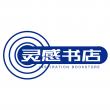
二十年通往和谐之路:欧盟对外代表体制研究:1993-2012:European Union external representation at the United Nations:1993-2012
正版保障 假一赔十 可开发票
¥ 59.32 6.0折 ¥ 99 全新
库存6件
作者金茜著
出版社中国社会科学出版社
ISBN9787520372947
出版时间2020-10
装帧平装
开本16开
定价99元
货号10849597
上书时间2024-09-22
- 最新上架
商品详情
- 品相描述:全新
- 商品描述
-
作者简介
Dr. Jin Xi, born in 1985, Shaanxi Province, is an Assistant Professor in the School of International Studies, Renmin University of China. She holds a PhD (2014) in Political Science, an MA (2010) in International Relations and Diplomacy (cum laude) from Leiden University, and an LLB (2008) in International Politics from China University of Political Science and Law. Her research interests include European integration and Europeanization, comparative regionalism, politics of visuality and aesthetics, and feminist international relations.
目录
Chapter 1 Introduction
1.1 An Overview of the EUs Presence at the United Nations
1.2 Conceptual and Methodological Considerations
1.3 Structure of the Book
Chapter 2 Literature Review
Chapter 3 Theoretical Framework: Principal-Agent Theory
3.1 Central Arguments of Principal-Agent Theory
3.2 Principal-Agent Theory and EU Representation in International Organizations
3.3 Principal-Agent Theory and New Institutionalism
Chapter 4 EU Representation at the U N:A Principal-Agent Explanation
4.1 The EU in the Context of the UN General Assembl
4.1.1 The U N General Assembly at a Glance
4.1.2 Developments of EU Representation at the UN General Assembly
4.2 EU Representation at the U N Security Council
4.2.1 UN Security Council Structure,Working Methods and Procedure
4.2.2 EU Representation in the Context of the UN Security Council
4.2.3 EU Coordination on UN Matters: From Brussels to New York
4.3 UN Security Council Reform:Toward a Single EU Representation?
Chapter 5 Quantitative Analysis of EU Voting Behaviour at the UN
5.1 Overall Voting Coherence of the EU at the UNGA
5.1.1 Data Description and Analytical Model
5.1.2 Hypotheses Testing and Evaluation
5.2 EU Voting Behaviour at the UNSC:Descriptive Statistics
Chapter 6 Case Studies: EU Representation in the Iraq and Libya Crises
6.1 A Discussion of Case Selection
6.2 The EU and the Iraq Crisis
6.2.1 Background
6.2.2 Horizontal Coherence: EU-level Response to the Crisis
6.2.3 Vertical Coherence: Divergent Reactions from EU Member States
6.2.4 An Assessment of EU Representation Coherence in the Irag Crisis
6.3 The EU and the Libya Crisis
6.3.1 Background
6.3.2 Horizontal Coherence: EU-level Response to the Libya Crisis
6.3.3 Vertical Coherence: Divergent Reactions from EU Member States
6.3.4 An Assessment of EU Representation Coherence in the Libya Crisis
6.4 A Cross-Case Comparison
Chapter 7 Conclusions
7.1 Revisiting the Main Findings
7.2 Recommendations:Towards a More Coherent EU?
7.3 Contributions, Limitations and Future Prospects
References
精彩内容
This book examines the coherence of EU external representation at the UN for the period of 1993-2012. It theorizes EU representation into a principal-agent model and adopts a nested analysis to detect the coherence variation in EU representation over time. At the UNGA, EU representation is quantitatively measured in terms of EU voting cohesion. At the UNSC, descriptive statistics are analyzed to capture the voting patterns of the EUMS sitting on the council. Both horizontal and vertical coherences of EU representation are then investigated in the case studies of the Iraq and Libya crises. It is found that EU representation coherence, in general, has increased with the developments of the CFSP throughout a period of 20 years. The reformed delegation structure introduced by the Lisbon Treaty, however, has yet to contribute to a more coherent EU. It largely depends on the genuine willingness of EUMS to overcome divergent preferences and to support common EU positions. Only until their declaratory commitments lead to real cooperation can the Union truly stand united and speak with one voice. Of equal importance is the call for closer policy coordination among different EU institutions. Time is still needed for EU representatives, namely the President of the European Council, the Commission President and the refashioned High Representative, to develop into fully-fledged agents with more autonomy and clearer delimitation of representation competences.
相关推荐
-

二十年通往和谐之路:欧盟对外代表体制研究
九五品北京
¥ 55.00
-

二十年通往和谐之路:欧盟对外代表体制研究,1993-2012
全新广州
¥ 61.01
-

二十年通往和谐之路:欧盟对外代表体制研究,1993-2012
全新广州
¥ 59.01
-

二十年通往和谐之路:欧盟对外代表体制研究,1993-2012
全新广州
¥ 59.01
-

二十年通往和谐之路:欧盟对外代表体制研究,1993-2
全新广州
¥ 98.81
-

二十年通往和谐之路:欧盟对外代表体制研究,1993-2012
全新南京
¥ 68.31
-

二十年通往和谐之路:欧盟对外代表体制研究,1993-2012
全新南京
¥ 68.32
-

二十年通往和谐之路:欧盟对外代表体制研究,1993-2012
全新南京
¥ 68.31
-

二十年通往和谐之路;欧盟对外代表体制研究1993-2012
全新保定
¥ 59.40
-

二十年通往和谐之路:欧盟对外代表体制研究,1993-2012
全新成都
¥ 66.90
— 没有更多了 —












以下为对购买帮助不大的评价